Corsham: Is this the prettiest High Street in England?
an amazing place to visit
The High Street running through the Wiltshire town of Corsham must be one of the most attractive in England. Corsham is a small town with some ancient and charming buildings within the shopping area. Without further ado, let me give you a little background and then let’s walk and tour the oldest part of this town. Are you ready?
Corsham, Wiltshire - a potted history
In the distant past, Corsham was an agricultural centre before growing with the woollen industry. In later years, as in much of England, the wool trade died out, and quarrying became important. The famous Bath Stone is quarried in this area, much of it being mined, which left a vast network of tunnels.
Those tunnels proved useful for military use, and Corsham became an area, both underground and overground, used by the Royal Navy, especially just outside the town at Copenacre. Those tunnels are still used for many storage purposes, such as documents and wine. There is an underground ‘town’, not too far out of Corsham, where the government and other important people would have been based in the event of nuclear war. It even has a railway station below the meadows above. Don’t worry about us, chaps!
The name of Corsham comes from Old English, Cosa’s ham, meaning a homestead or village. The word ham is included in many English place names. It is recorded in the year 1001 as Coseham and by 1611 Cosham. It’s rumoured that with a west country pronunciation, a letter r was inserted to make it sound as was pronounced Corsham. There is also evidence that it was once known as Corsham Regis due to its association with the Anglo-Saxon King, Ethelred of Wessex.
The oldest and best things to see are all reasonably close together, so this will not be a long-distance walk.
The Methuen Arms
Starting from the end of the High Street at the junction with Lacock Road lies The Methuen Arms on my right, listed as number 2, High Street. The name Methuen is synonymous with Corsham. Corsham Court is the family seat of the Methuen family and is only an arrow shot from The Methuen Arms. I will let you know more about the grand house later.
On the side of the pub are a couple of interesting features, which you can see in the photographs below. The ancient chequer signs, still visible on the doorway, are most likely associated with a money table. This sign would show that the Inn provided financial services. Innkeepers often provided a basic banking service, something I wasn’t aware of until I started researching for this article.
Another indication that the proprietors of The Methuen Arms were good entrepreneurs lies above a window on the same side of the building. The words Post Office are still visible. In the early 1800s, the first post office in Corsham was established here. It was called Commercial Inn and Posting House. This business fitted in well, as the establishment was a coaching inn and could transport mail along the Bristol to London route. There was stabling for up to 40 horses.


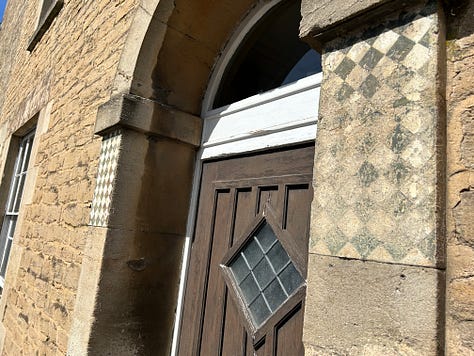
Going back to the beginning, in Tudor times, this was the site of a very impressive house, Winters Court. In 1463, the property was owned by the Nott family, and in 1608, it became a pub and was given the name The Red Lion. Christian Nott died in 1799, and ownership passed to the Methuen family, who changed the name to The Methuen Arms.
A claim to fame for The Methuen Arms is that when Philip, the Duke of Edinburgh, was based at Royal Arthur the Petty Officer Training School, he played Skittles there. Occasionally, he wouldn’t be available when he went to visit the then Princess Elizabeth in 1947, the year they married.
Many more tales about The Methuen Arms exist, but we must move on! It will take years to look at the history of every property. As you can see from the photos, the shop fronts are in some amazing buildings. The photographs will do some of the talking for me. As always, click on an image, and it will enlarge in your web browser.
Corsham Almshouses
Before I go along the High Street, I stroll in the direction of the National Trust village of Lacock, along the appropriately named Lacock Road. A group of very old buildings lies on the corner where the road turns towards Melksham. These are the Corsham Almshouses.


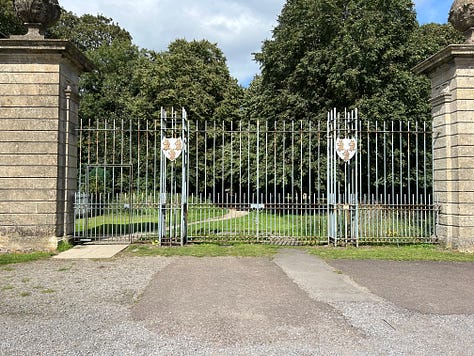
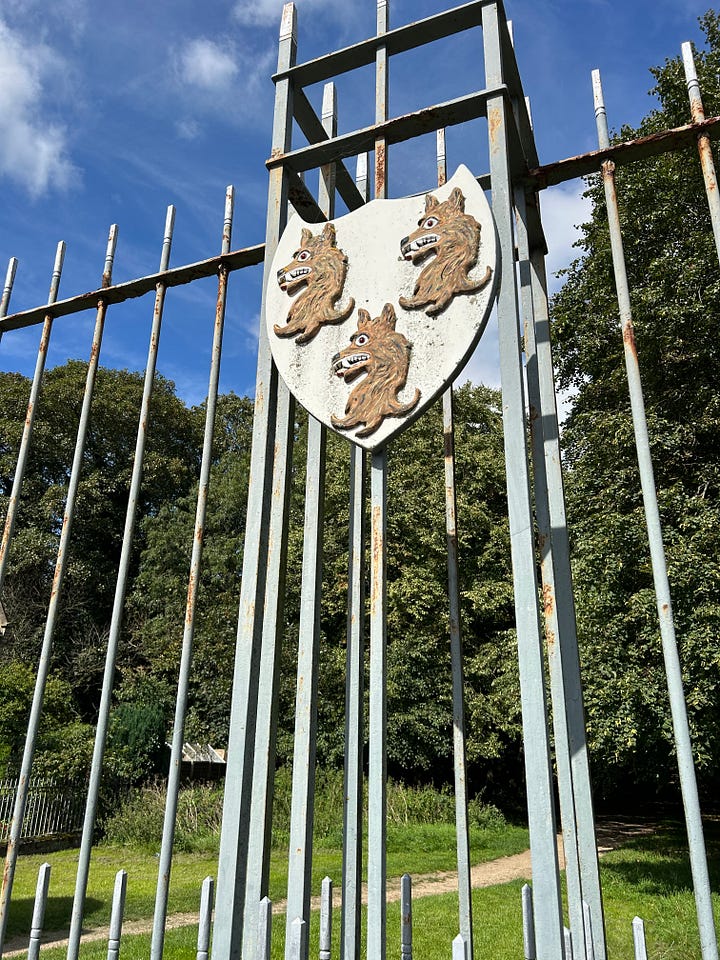
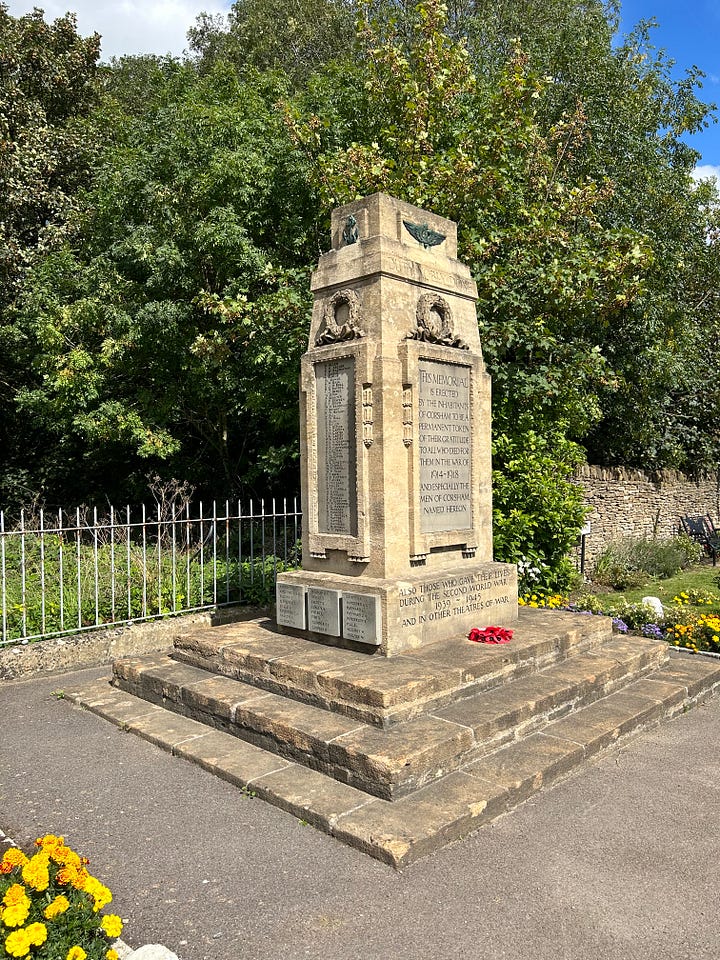
They were founded in 1668 by Lady Margaret Hungerford to provide accommodation for six poor people and to educate ten poor children. It is usually possible to look around part of the property, the Schoolroom and Masters House, but it is currently closed for restoration. Here’s their website to keep up to date on the progress and opening times. It retains most of its original features, which is amazing in that over three centuries have passed.
On this corner of the road is also a war memorial and the original entrance to the long drive to Corsham Court, which I will be visiting after a look at the High Street.
The High Street Corsham
Let’s walk along one of the most charming High Streets that exist in England.
Everywhere I look, the buildings are old and characterful. Corsham appears not to have suffered as many towns have with shop closures. Although I am visiting on a Wednesday afternoon, it’s reasonably busy, and many seem to be enjoying the sunshine and eating outside where they can. People are going into the shops, and that’s good. There is a good variety of shops in the High Street and just off this street is the more modern Martingate Centre, which has over twenty shops and includes a Co-op supermarket. Today, though, I want to concentrate on the older buildings in the town.





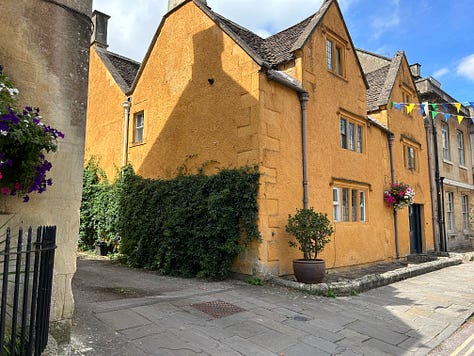
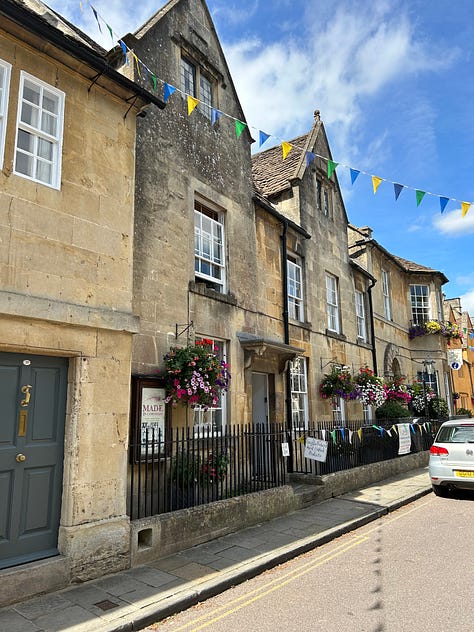


I walk over and look in the windows of two antique shops next door to each other, both closed today. One of them, The Table Gallery, is owned by TV Presenter and host of BBC TV ‘Flog It’, Paul Martin. Speaking of TV. Corsham has been used by film companies and is well known for its part in the TV series Poldark. Did you think it was filmed in Cornwall? The deception of the drama industry! Much of that series was filmed far away from its setting and around this area.
There are plenty of watering holes and places to eat in Corsham, with a good number along the High Street. It’s a scorching day today, and the wet trade undoubtedly benefits from a build-up of thirst.









I have picked out a few of the properties to tell you a little more about.
Corsham Town Hall
This building is over 200 years old. It looks very grand with its imposing frontage and clock. It was completed in 1784 by the then Lord of the Manor, Paul Methuen. Built as a market hall and courthouse, you can see from the ground floor appearance today that there used to be arcades where the traders could sell their goods.
In 1882, it was enlarged. The central doorway was created, and a balcony was added, along with an extra floor. It became a hospital during WWI, and records show that 875 wounded were cared for.
Mayo Memorial
Charles Mayo died in 1895, and this memorial is to remember him for his fine works and philanthropy expressed to the people of Corsham. He lived in Ivy House on Priory Street, which lies a few yards away. Charles was Chair of the water company that brought piped fresh water to Corsham in 1889.
The Old Fire Station
90a High Street was the home of Corsham’s very first fire station. This was circa 1800, and if you look carefully at the photograph, you can see the brick arch over the big doors. I expect this was where the horse-drawn fire engine was stored. Sorry about the wheelie bins!
Flemish Weavers Cottages
Numbers 94-112 are known as the Flemish Weavers Cottages. The Lord of the Manor built the cottages for the weavers in the 17th century. Flemish weavers were highly skilled and renowned for their work. Many fled Flanders and took up weaving in England.



Opposite the Flemish Weavers Cottages are three interesting cottages.
75 and 77 High Street, Corsham
Number 75 was built around 1740, and number 77 in 1805 on an earlier site. Looking closely at the faded lettering above the window reveals that these two homes were once a Temperance Hotel.
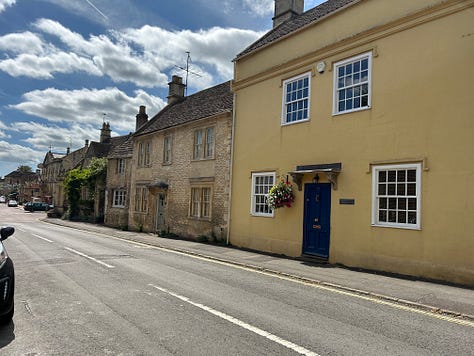


79 High Street, Corsham
This is the oldest property within Corsham Tithing. Built during the 15th century, it was owned by the Bolton family. Who today builds houses to last this long?
Corsham has so much to see in this relatively small area, so I now take a short walk off the High Street along Church Street, which unsurprisingly leads to the church. More than that, I will also arrive at the entrance to Corsham Court.
Firstly, though there are some lovely old weavers cottages in Church Street. Just look at the door on the first floor (photo 1) where materials and finished goods would be passed. Each of these cottages, I am sure, could tell a thousand stories. Looking over the wall at the end of the houses on my left is what could be assumed to be a ruin.
However, it’s a folly (photo 3) within the grounds of Corsham Court, so don’t be fooled. There was once a trend to build such things by the wealthy. This folly, though, served another purpose. It was built to hide the view of number 6 Church Street from the view from the West Wing of Corsham Court.
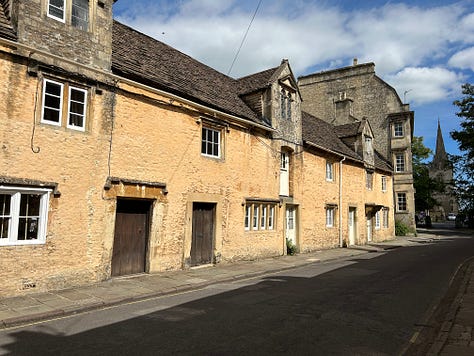


St Bartholomew's Church
Many old churches in England are of Anglo-Saxon origin, and this one is, too. The current church dates back to the 12th century and has been added to over the years. The pillars at the west end of the nave still show rubble from the original Saxon west wall. It was rebuilt in its current form in 1465 by Thomas Tropnell. He was a steward to the wealthy and powerful Hungerford family (See my article about Farleigh Hungerford Castle).
Corsham Court
Corsham Court is the family seat of The Methuen family, which I have mentioned a few times in this article. Eight generations of the family have lived here. The house is Elizabethan, dating back to 1582.
I decided to part with £10 of my retirement fund to peruse inside the house and explore the gardens. Starting in the house, it was nice to cool off from the sunshine. Visitors will see a fine collection of paintings. Only a relatively small part of the house is open to the public as it is still a private home.
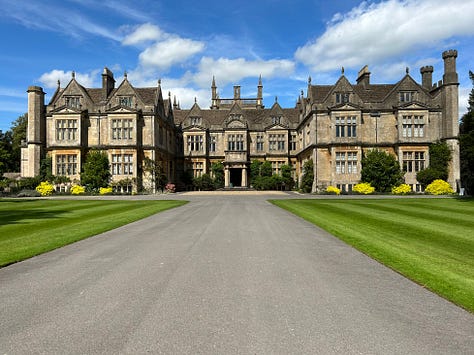
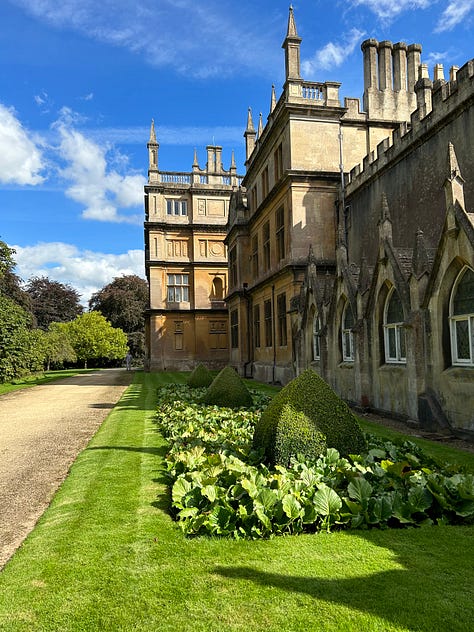




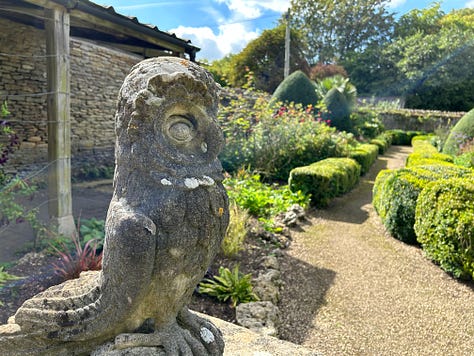

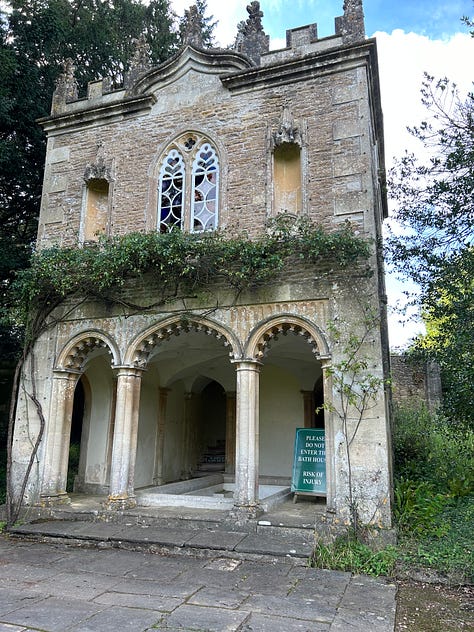
The paintings are mainly housed in the largest room, designed by the architect Lancelot “Capability” Brown. He and Humphrey Repton designed the gardens. I was given two booklets. One is a list of each painting, and the other is a guide to the garden with the trees identified. It was a pleasant experience looking at the paintings and other objects on display.
Leaving the house, I was directed to turn left to explore the gardens. I can see the view of Corsham Lake in the distance. Walking around the rear of the house and the manicured lawns will bring you to the formal gardens with the beautiful flowers. You will also come across an array of sculptures. More about these in the next article.
When you wander around Corsham, don’t be surprised if you see peacocks. These birds often leave Corsham Court’s gardens. There were some in the gardens today, and I did notice some in a driveway opposite Charles Mayo’s old house!
Corsham Court
Corsham Court at the heart of Corsham Corsham Court is another one of those places I have never gotten around to visiting. On the day I visited Corsham to write about the lovely old High Street and surrounds, it was a perfect time to take a tour.
Did you enjoy this article? Please click the like/heart button.
Your support is greatly appreciated. If you wish to offer extra support for what I do, you can upgrade your subscription or use Buy Me a Coffee.



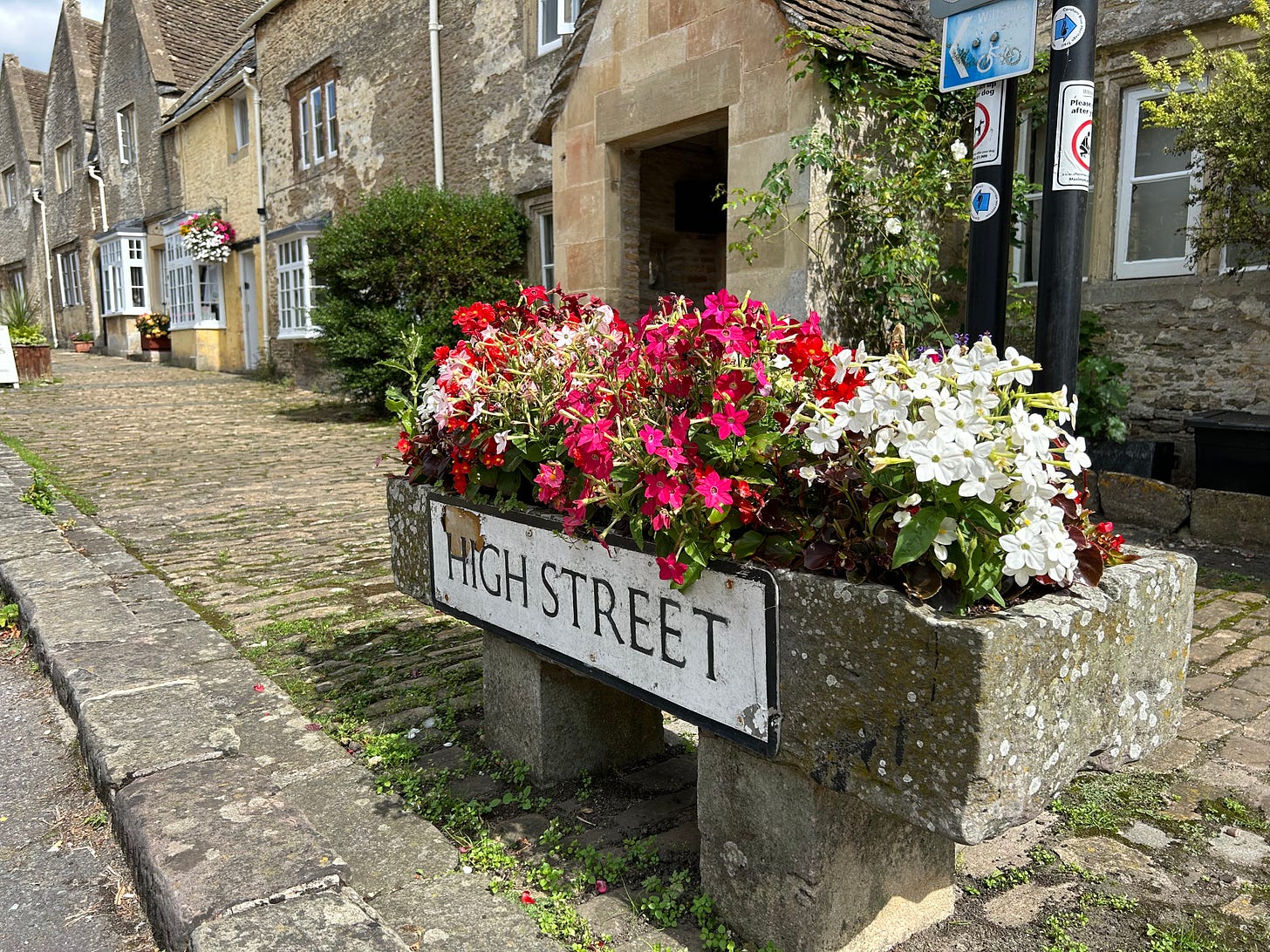

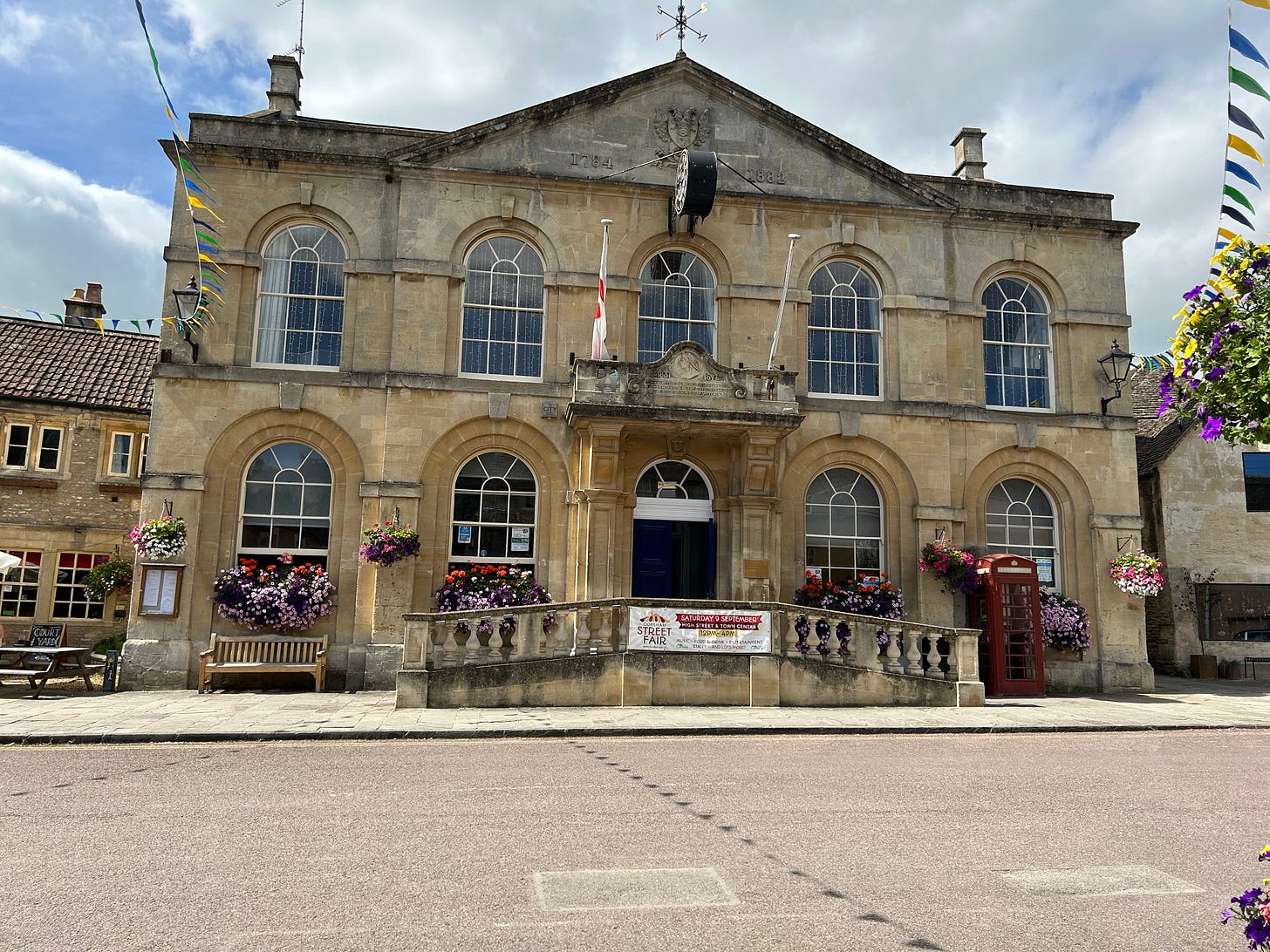
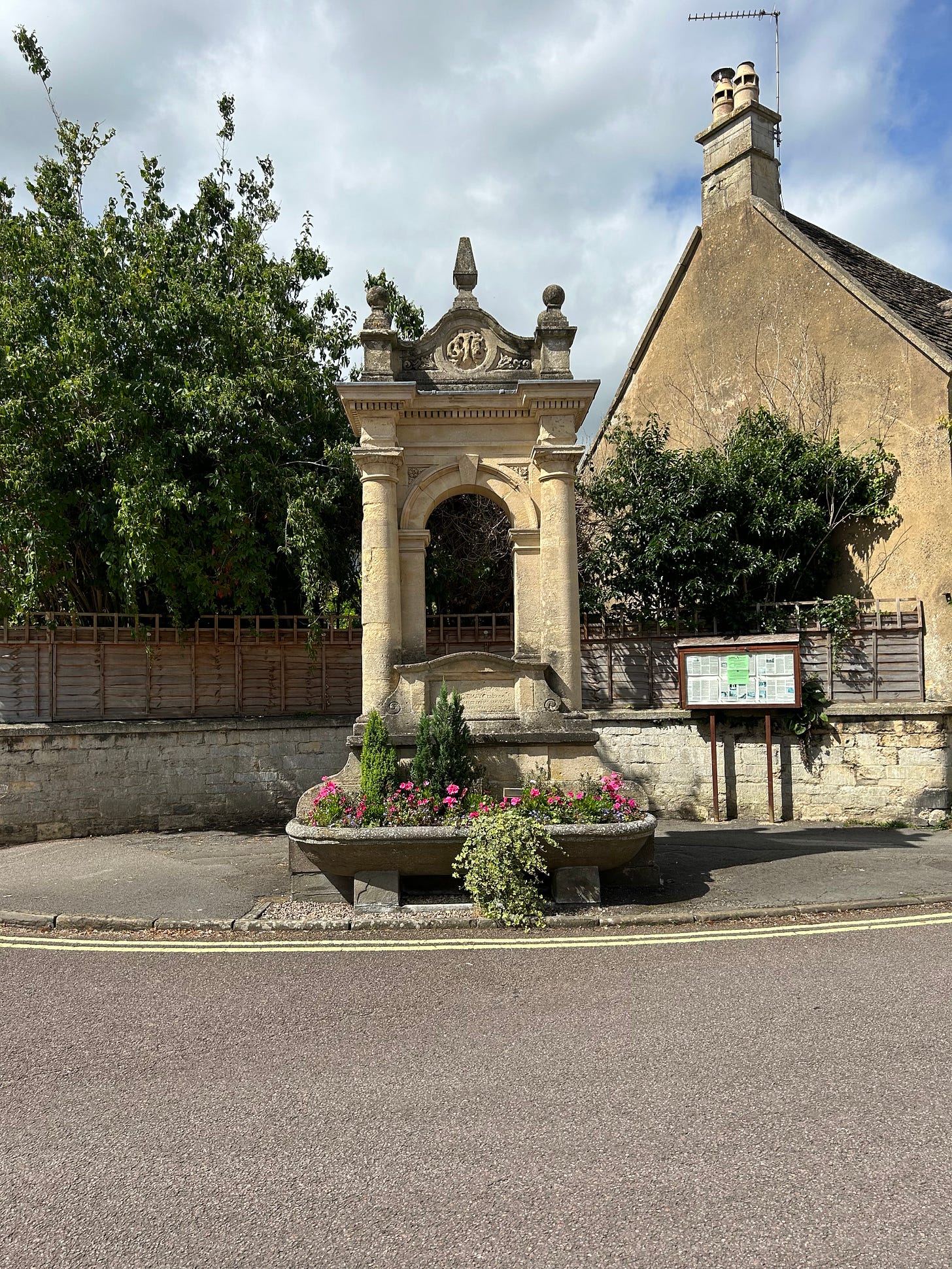
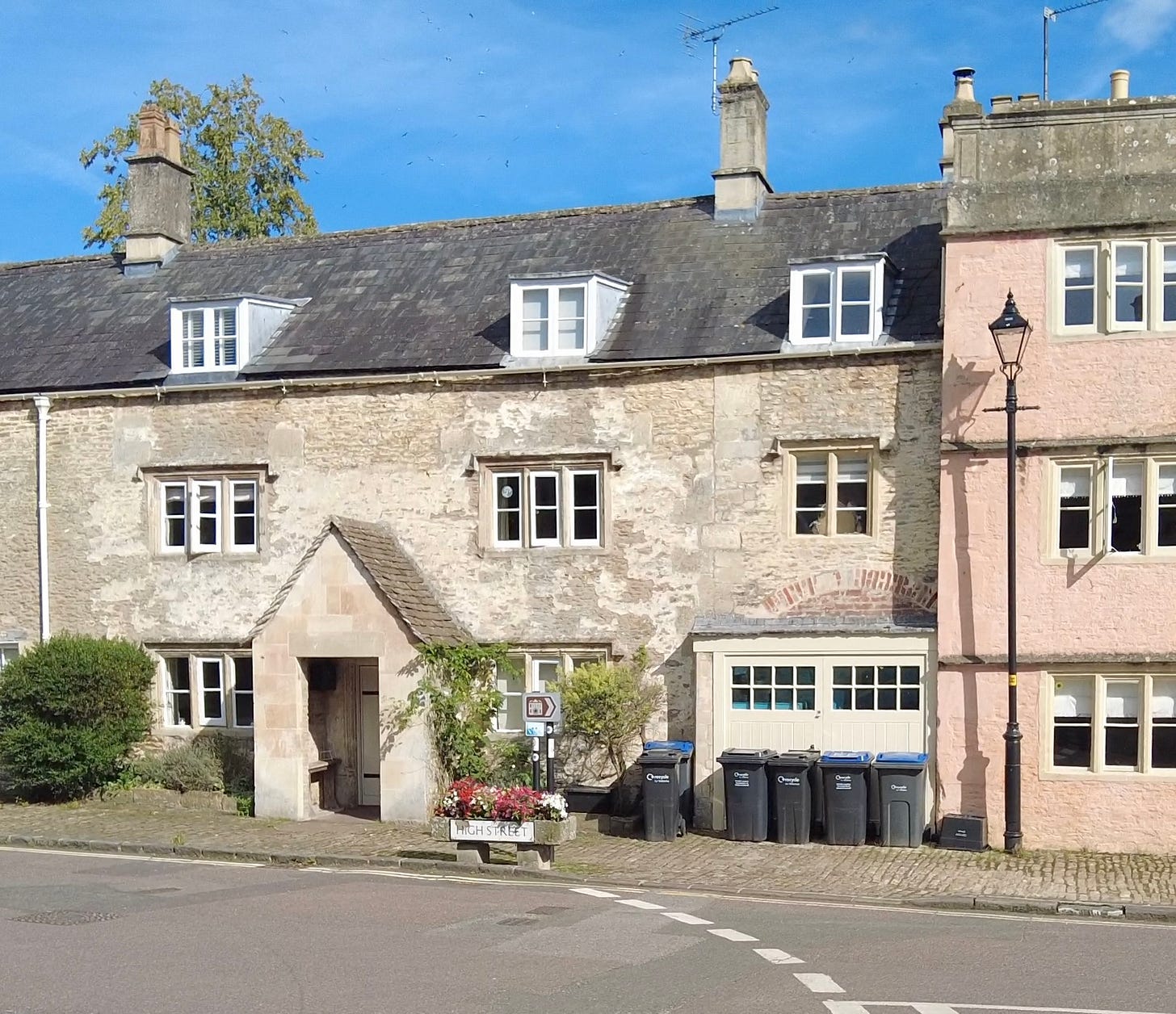
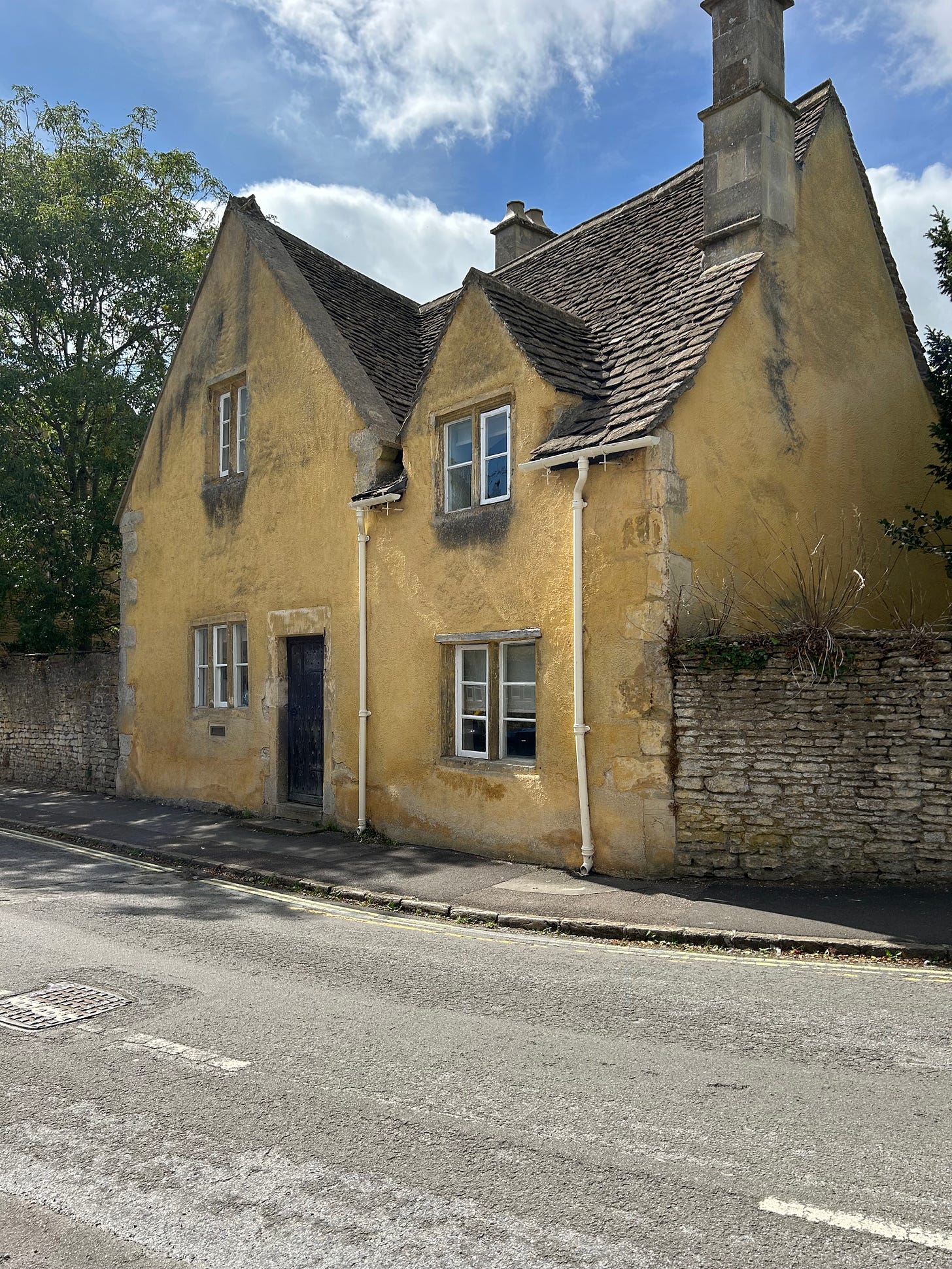
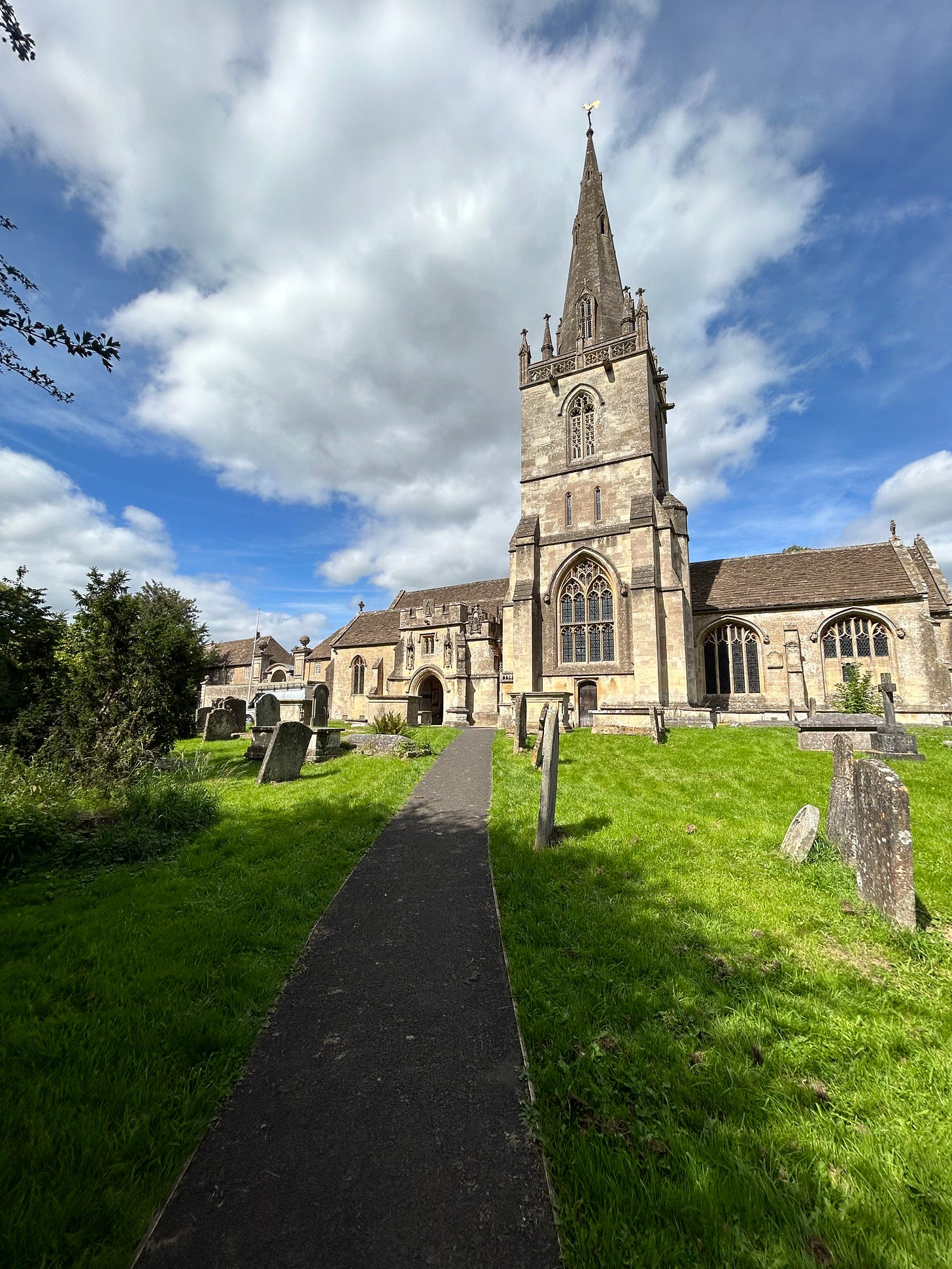
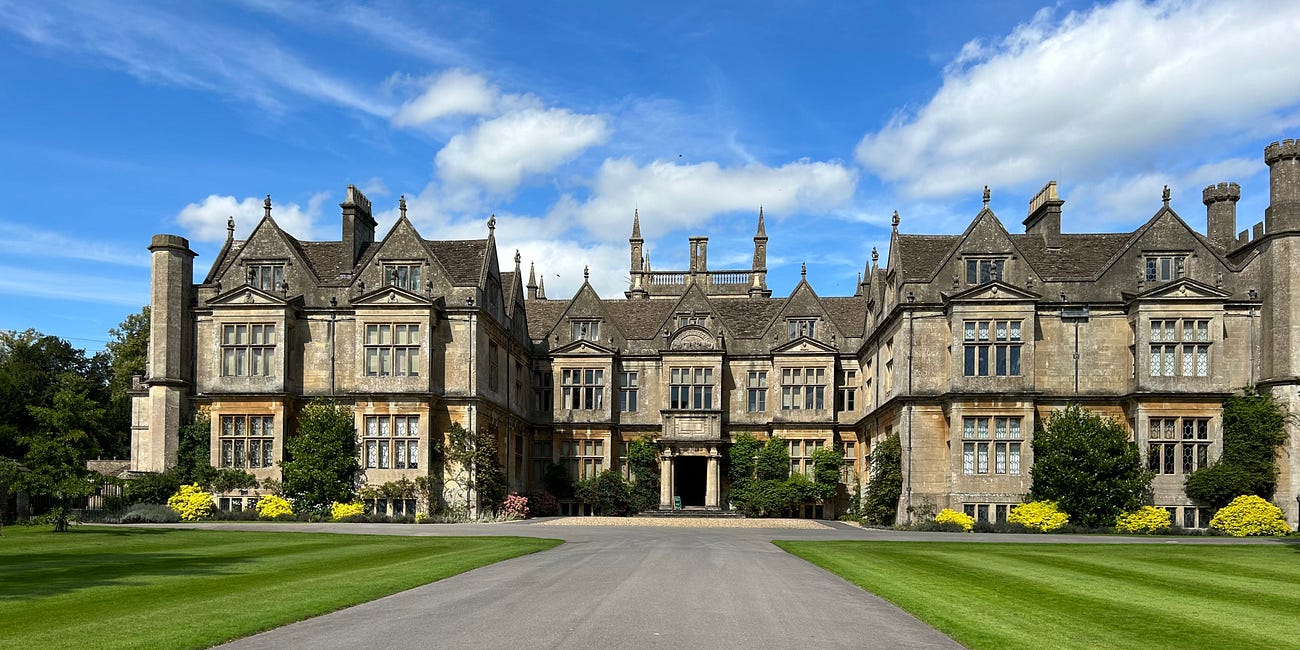
Best post yet! Delightful tour Informative and amusing.
It's certianly a contender thanks for sharing the lovely images.